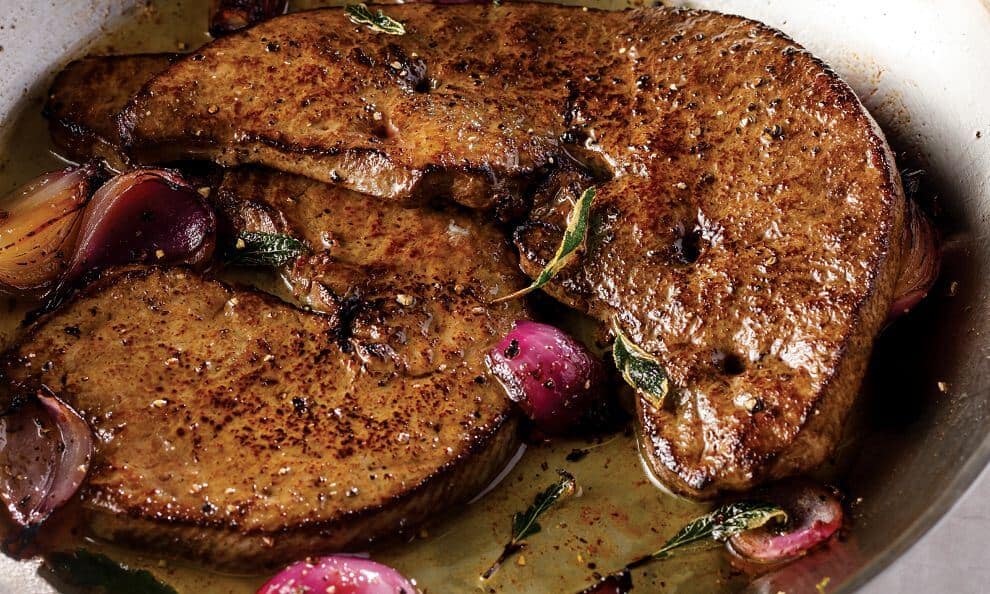Liver Magic!
For those looking to dip a toe into the waters of including organ meats in their diet, liver is a great place to start.
Is it really that uniquely nutritious? You betcha!
What nutrients am I talking about here?
Liver is particularly rich in many minerals and B vitamins that complement those found in muscle meat.

We can compare muscle meat to liver and quickly notice that the latter is a much richer source of many nutrients...
Including; biotin, folate, riboflavin, vitamin C, choline, vitamin A, vitamin K2, and copper.
On the mineral side, liver is one of the best sources of copper, which is needed for enzymes like super oxide dismutase (SOD).
SOD serves a critical role in the redox management system in our bodies by converting the superoxide radical (O2-) into molecular oxygen (O2) or hydrogen peroxide (H2O2).
Copper deficiency can result in accumulation of O2-, which leads to disastrous consequences in terms of excess oxidative stress.
Deficiency of this mineral is rare, but it can occur if we consume too much zinc without some copper to balance it out.
The most common reason for this is excess zinc supplementation, but it is also possible through diet if we get a lot of zinc in muscle meat without liver or other copper-rich foods.
Clinical copper deficiency manifests with neurological symptoms that mimic B12 deficiency, including difficulty with balance and walking.
Liver is also rich in choline, which is important for the cell membranes throughout our body.
We’ve also discussed the vital importance of vitamin K2 for proper calcium partitioning and cardiac health—and liver is a valuable source of this nutrient as well.
From the Rotterdam Study, we saw that those who had the most K2 in their diet showed a clear trend toward less cardiovascular disease, while wimpy K1 from plants did little to help these folks.
The critical roles played by riboflavin and folate in the function of the MTHFR enzyme have already been discussed.
These B vitamins are found in robust amounts in organ meats like liver, but levels are much lower in muscle meat.
If we don’t include organs in our diet, we can become deficient in these nutrients...
Leading to rising homocysteine levels and possible issues with methylation reactions within detoxification, neurotransmitter synthesis, and hundreds of other biochemical processes in the body.
We’ve discussed vitamin C at length previously, but it’s interesting to note that liver and other organ meats are much richer sources of this nutrient than muscle meat as well.
Biotin, or vitamin B7, is often forgotten about, but it’s quite important for healthy hair, skin, and nails.
In fact, biotin was originally named “vitamin H,” derived from the German phrase “haar und haut,” which translates to hair and skin.
While we are discussing biotin, it’s important to note that while raw egg yolks can be a delicious addition to a steak or tartare, eating raw egg white is a bad idea.
In raw egg whites is a compound called avidin that can bind biotin and cause a deficiency of this nutrient.
The RDA for biotin is 30 micrograms per day, which is present in a few ounces of liver but we’d have to consume 21 ounces of steak to get this amount.
Simply put, liver is a nutritional powerhouse that helps complement muscle meat, and by including moderate amounts of it in our diet, we are sure to benefit profoundly.
I know fresh organs can sometimes be hard to find, and that the taste can be hard to get used to...
But I promise liver is packed with so much goodness that once you start eating it it's hard to stop!
by Paul Saladino MD. Carnivore Code

